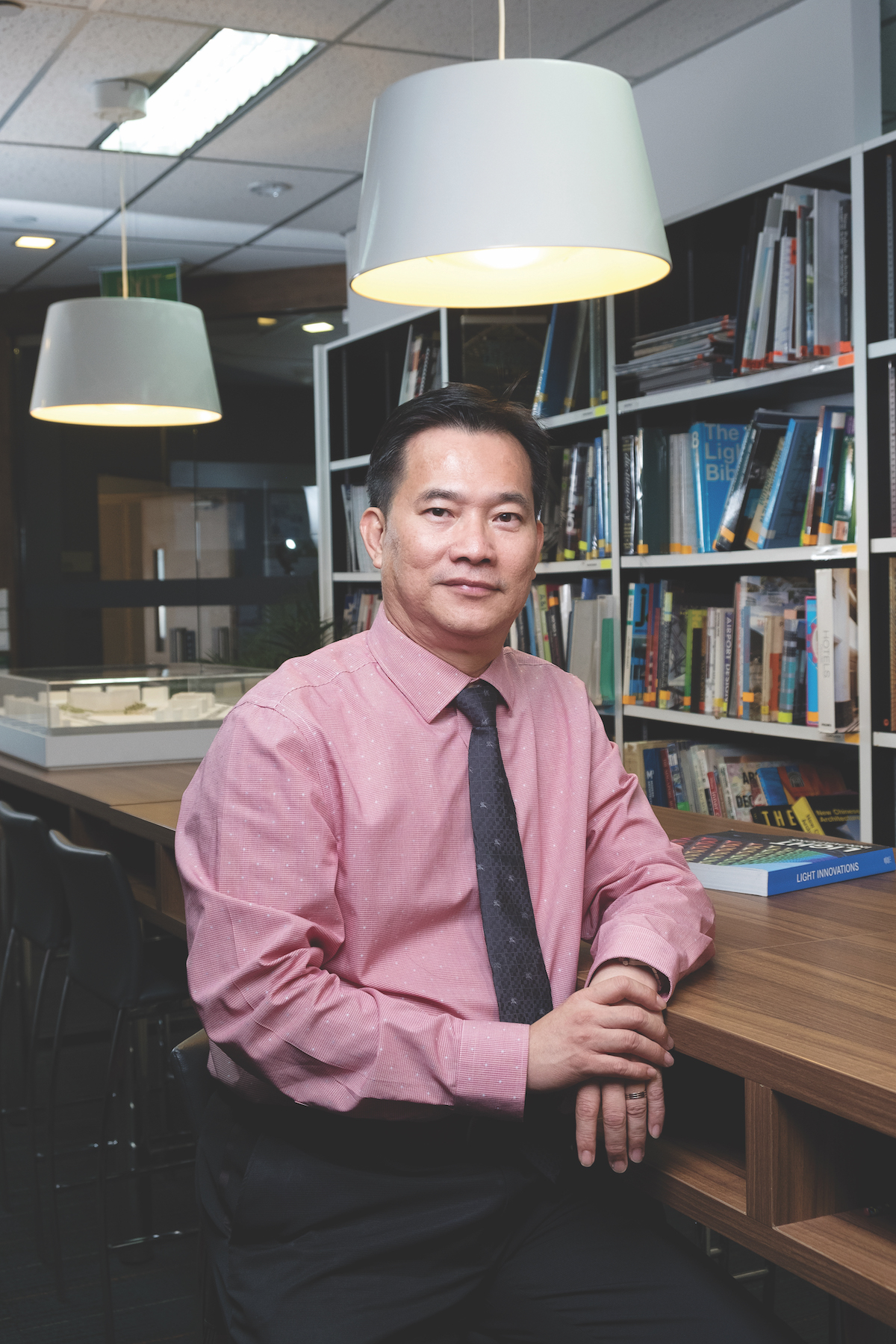When Singapore firm SAA Architects won the competition for what will be the largest hospital in South East Asia, it saw it as a “sweet victory”. As Chief Executive Yeo Siew Haip explains: “We won the competition even though we do not have hospital experience and we are not the cheapest.”
The man who has been leading the practice since 2007 describes the S$1.2-billion Woodlands Integrated Healthcare Campus as “another milestone” for the firm, which celebrated 50 years in 2015: “Not just because of the project size, but because it is something we had not done since I took over the leadership.”
The firm is no stranger to big-scale projects. Changi Airport’s Terminal 4 is already under its belt, and the 10 underground MRT stations running through Kuala Lumpur Central is another project currently on its plate. “We are not the biggest firm among the top 10 in Singapore and Malaysia, but we have won a number of big projects,” says Yeo. So it’s somewhat surprising when he makes it clear that the firm is not interested in growth for growth’s sake. “If I can do 3 good projects, why would I do 10?” he says. “The firm is not into the number of projects but the type in which the firm can contribute its skills.”
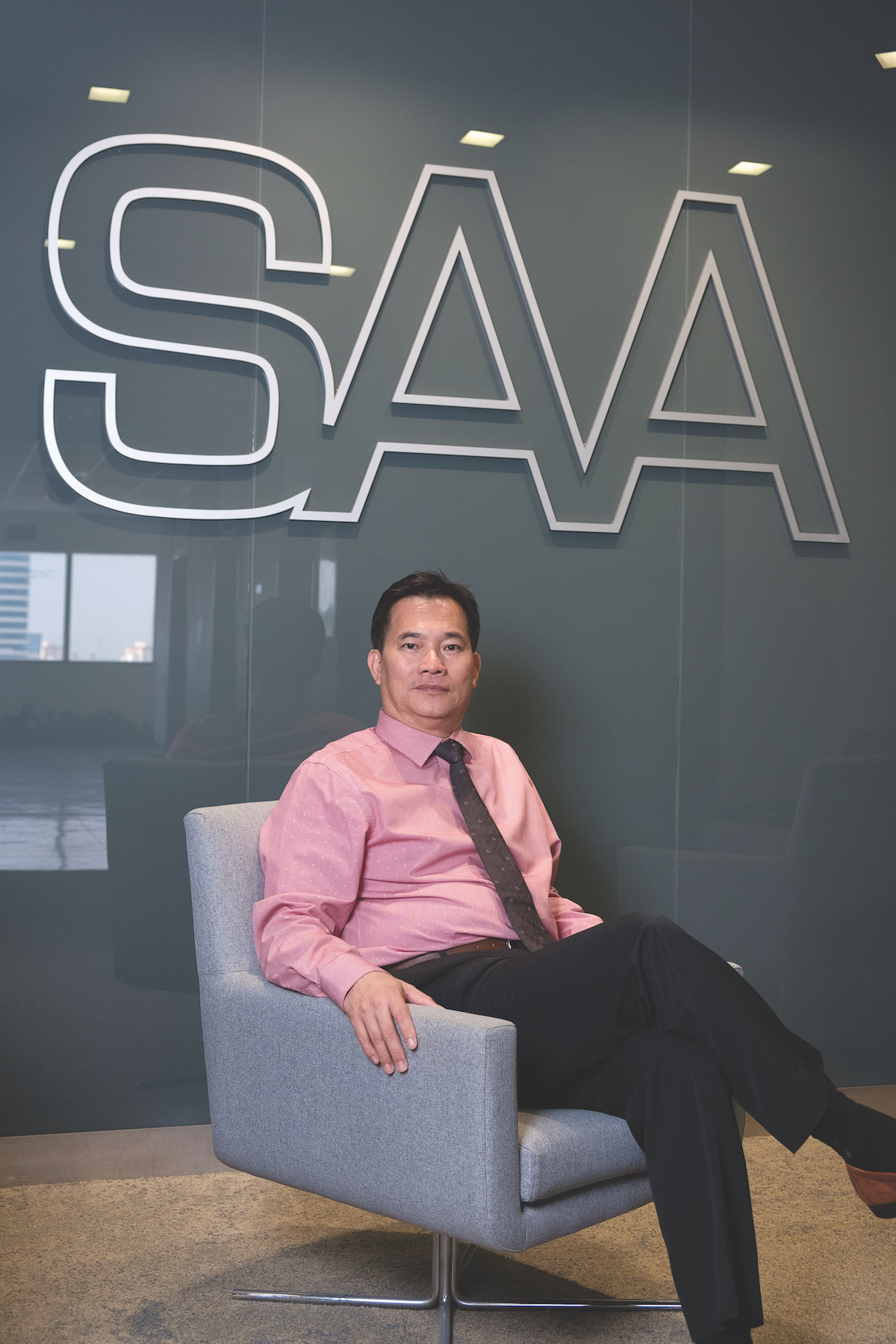
Yeo sees the healthcare and airport projects as the fruit of work that SAA initiated about 8 years ago. He has been a director with the firm since 2000, when his former firm Katsaa merged with SAA, and as he stepped into his current role as CEO, he spent time considering how to best position the practice going forward. That period of reflection and research made things clear to him: the firm should focus on its people and what is important to its clients and business partners, and that means staying nimble rather than chasing after growth. “I said: ‘Let’s build a firm to become the developer’s choice and also our business associates’ choice as partners, which is not measured by numbers; it’s not measured by how big you are’.” If the firm wanted to be true to that intention, it had to focus on 2 key areas: design and delivery.
“Some of our competitors grew very big through collaboration with a lot of foreign partners,” Yeo says. “You can see that all over Singapore: there are many world-class architects here and a lot of local architects that have become partners.” They have done well, but Yeo and his management choose to be different; happy to swim against that tide. “We focus on building our own design capability to design the work that we do ourselves as much as we can instead of seeking out partners.” Yeo sees his approach as a fusion of the best of Eastern and Western culture. “We try to have a Western model — good management methods — coupled with our Asian values of doing business.”
As its project wins demonstrate, the firm has prospered as it has consolidated its design approach in the past 8 years.But great design is only part of the picture. Yeo also knew that it must place equal emphasis on the delivery side of the work.
“A good design must have a superb delivery to be able to see the end product so that the user is extremely happy,” he says, adding it is the “longest part of the work”.
“You may design for 6 months or a year or 2. Delivery takes you 3 years, 4 years, maybe even 6.”
With those twin aims clear, it was important to have the people and culture to realise the vision for the firm going forward. “I had a very good team of partners who also joined me
in 08–09 — new shareholders and directors who shared the same vision and values,” he says.
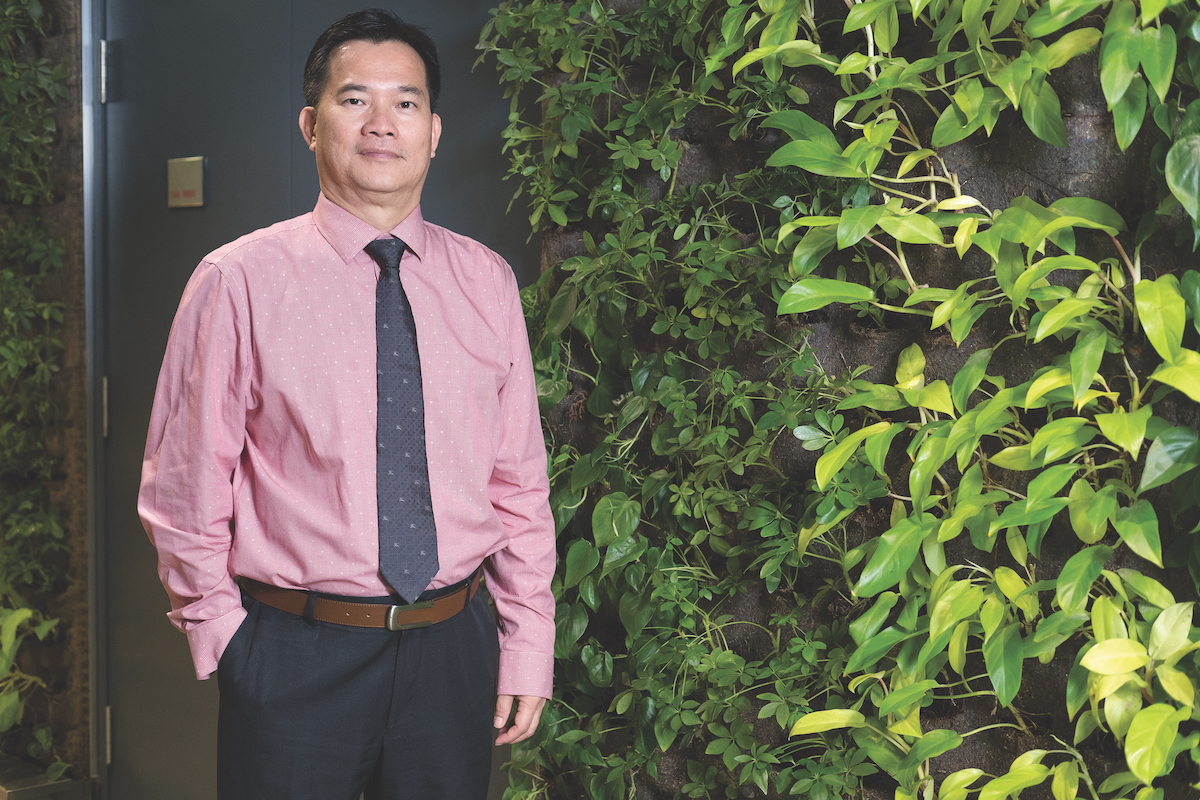
“As we see how we can build our dreams, individually and collectively as a company, all our lives are going to be so enriching.” – Yeo Siew Haip
Retaining those people was crucial, and that raised some more challenging questions for the firm.
“Being a country that is scarce in human resources, how do we train them? Retain them? How do we really create a sustainable working environment and practice?
“So we started thinking and did some research and used some of the time that we spent together to think about it, and we came up with our philosophy: building dreams and enriching lives.” Yeo explains the thinking behind the philosophy: “Each of us had a dream to be an architect, and when we first joined the firm we could be dreaming of getting the position we want; getting the salary we want; getting the kind of work we want to do. When some of those dreams are realised along the way, our lives are enriched.”
That then has a flow-on effect. “When my life is enriched, my family and my loved ones are happy; my colleagues around me are happy; everybody is going to be happy around them.”
He concludes: “As we see how we can build our dreams, individually and collectively as a company, all our lives are going to be so enriching.”
What did that mean in practical terms? Yeo says the philosophy could be distilled into 3 principles: urbanistic, humanistic and optimistic.
Pared back to basics, ‘urbanistic’ means “being a good neighbour” as an employer, a boss, a colleague or a team member, he explains. “We are not an island on our own: ‘urbanistic’ means you are relating to a community, because architecture is about community.”
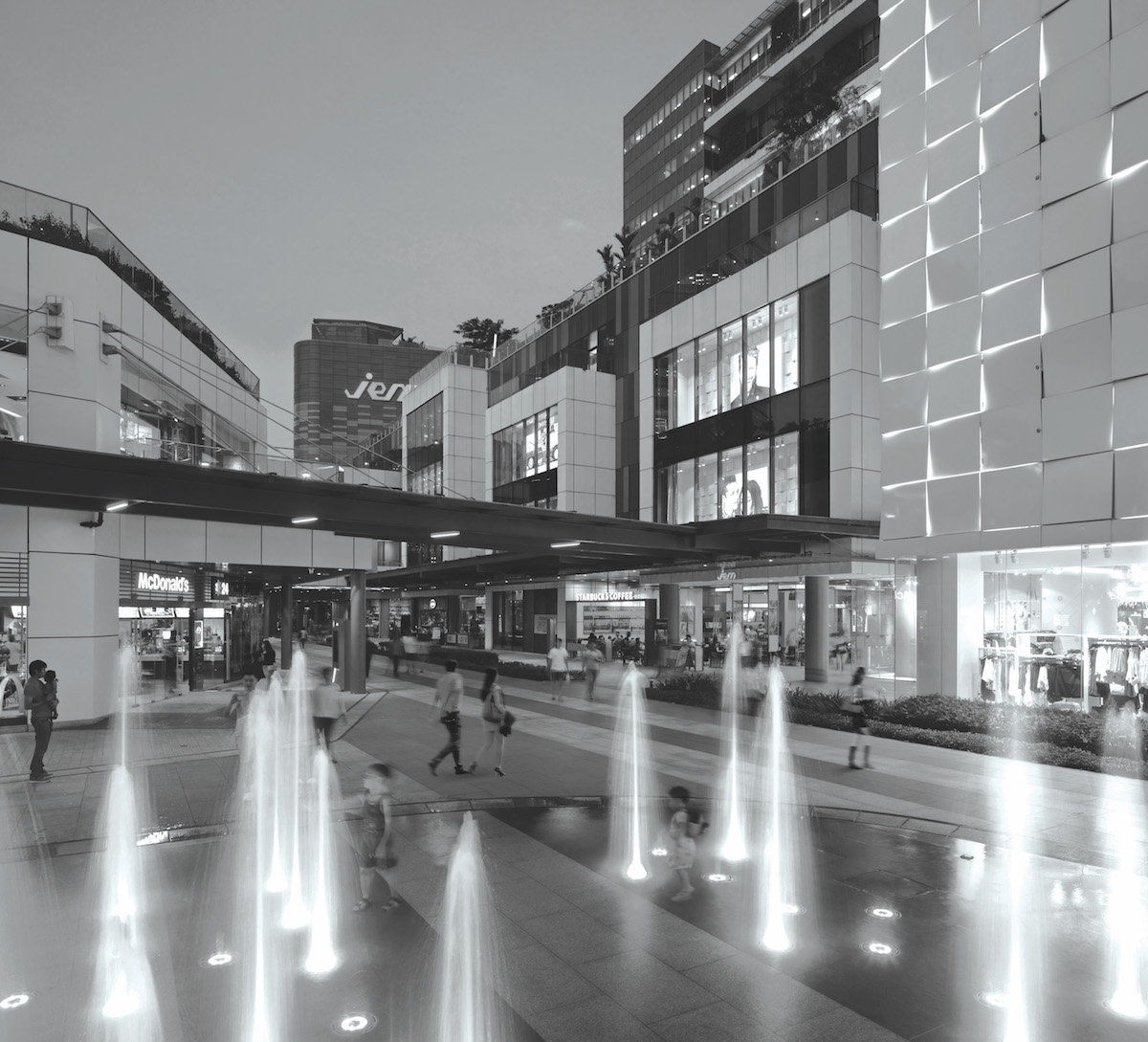
It means saying hello to the person you’re sitting next to or being friendly to people as you pass through the office. “Being good to one another — it’s that simple,” he says.
The ‘humanistic’ principle recognises people and their humanity. It might include allowing flexibility in working hours for people who can’t work normal office hours. It also means being willing to look more deeply at a person’s capabilities. “Can the person do the work? Can he handle it? Can this person be better if he is put on somewhere else or another project?”
The third principle — Yeo’s favourite — is ‘optimistic’. “I believe happy people do happy things. So how do I make my staff happy? How do I make myself happy? How do we make our clients happy?”
The 3 principles are now enshrined in the firm’s human resource policies and processes. “If we can improve a process by being humanistic, urbanistic or optimistic, we probably save half a day. It doesn’t cost us much money and we can improve it. It is an ongoing journey,” he says. “We keep transforming ourselves regularly, creating spaces for people to meet, to talk about the workplace. It’s a working lifestyle.” The outcome is a workplace that is adaptable. “I think we offer people alternatives; we are adaptable, flexible, we listen,” he says.
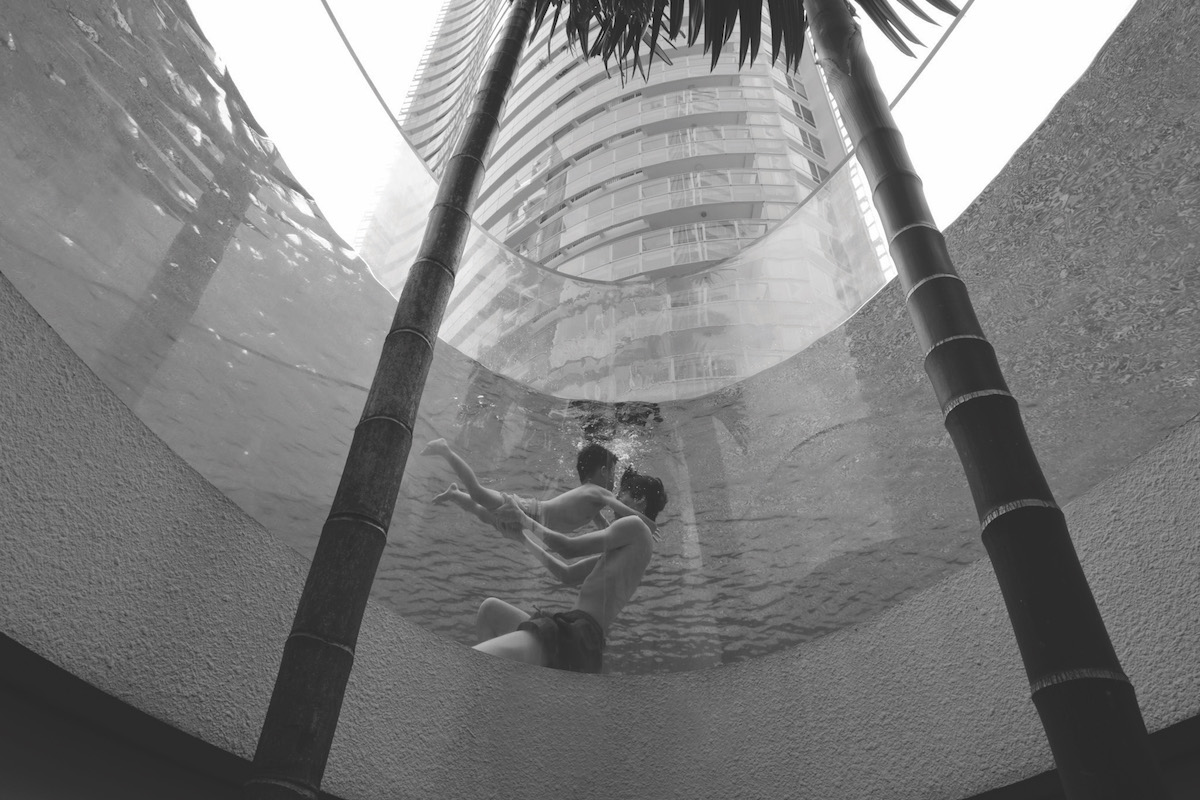
To support that process of change, the firm is now organised into teams of 30 to 40 people, each led by a director. The director takes responsibility for the individual team member’s career development and mentoring.
Though the firm works in teams, they are not in silos. “It is common for each team to work with other teams; that is perfectly common,” Yeo says. “In this way, resources can be optimised and knowledge can be shared. This is made possible because the team does not account for the profitability, except to achieve the best design and delivery. The management believes that this approach will bring out the best in the staff and the office’s philosophy.
“SAA staff come together very often. Any one of us can look at another team’s work. This is important to create an open and inclusive creative environment.”
To keep the workplace free of conflict, he also takes a hard line on office politics. “No politics. It’s not allowed. If I hear about it, I don’t care whether someone is a director or junior staff; they will be fired, because I can see how politics can destroy a firm easily.”
Diversity in the practice is also an important piece. “Having a group of people who are from different backgrounds, different parts of the world, to me is a necessary ingredient to have a successful culture where ideas can keep flowing because architecture is about community; it is about history; it is about culture; it is about geography. You can’t take a building here in Singapore and say, ‘Let’s put it in Australia; let’s put it in America’. It wouldn’t work. It needs to relate to the way people live; the way people think; the way people eat; the way people behave.” As an example, he points to the importance of the concourse in an airport in a place like India. “The use of the departure and arrival halls must be considered carefully, because when someone travels, the whole village comes.” The firm counts 18 nationalities among its staff, including Europeans, Americans and Asians. “I think that is what makes the company work: this diversity. I believe in diversity.”
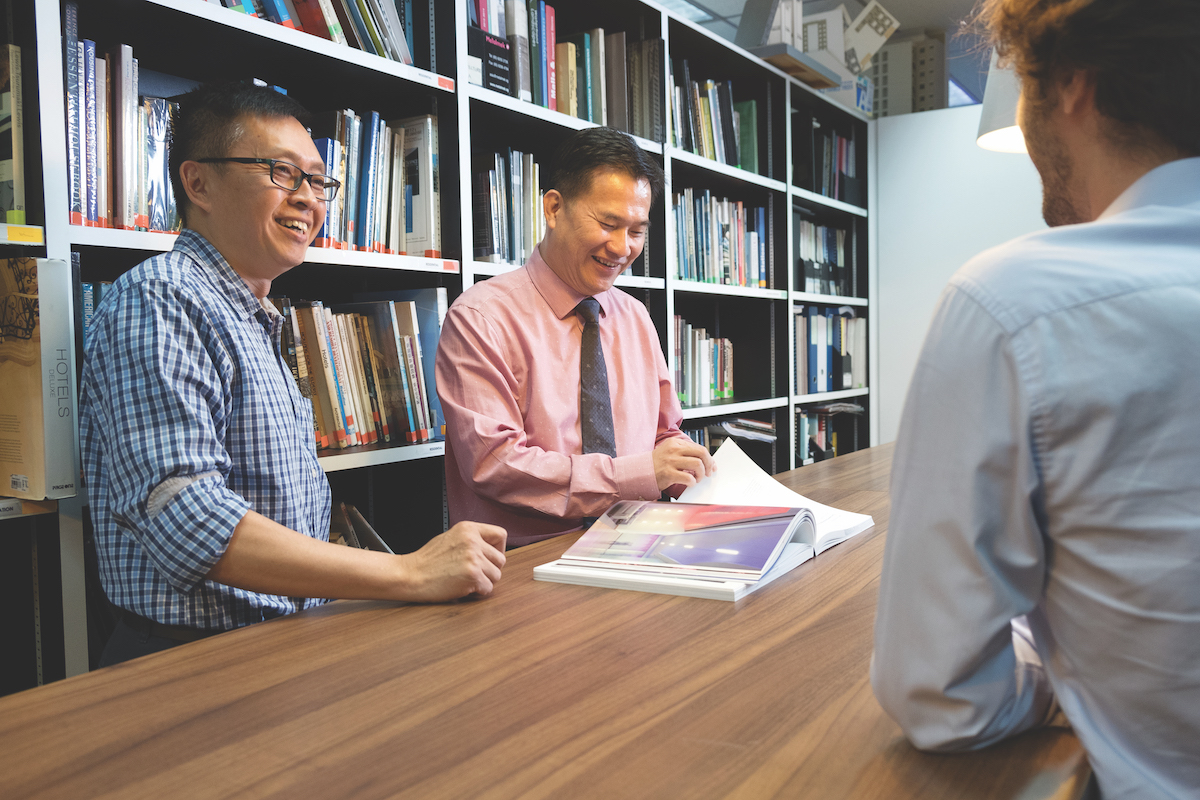
“Having a group of people who are from different backgrounds, different parts of the world, to me is a necessary ingredient for a successful culture where ideas keep flowing.” – Yeo Siew Haip
Looking ahead, he is conscious of succession planning and giving younger architects opportunities in order to give them a sense of achievement. The firm is beginning to move towards specialisation, with its healthcare, airport and transporation projects. For instance, he points to the Changi Airport Terminal 4 project. “It’s a very big project. We put our architects on different parts of the job, different components, and as they just purely did the façade, they have become, in a way, an expert at doing façades. This builds specialist knowledge in the team.”
Another way he is shaping the careers and lives of younger architects is to involve them in its social enterprise focused on architecture education for children. “We created this program for children aged 7 to 12 where they learn things about sections, forms, spaces; they use their hands to build models; and they learn about recycled and green materials,” he says.
From the architect’s point of view, he had 2 objectives in launching the program. “When they are young, I want our architects to engage with children, teach them, understand them. The other objective is to take them away from their work — to show them there is something that you can do besides your work that can contribute to society at large; to create meaning.”
To Yeo, that is ultimately what makes the practice successful. “Moving forward, we will continue to develop this philosophy of building dreams and enriching lives,” he says.
“We will always focus on how this practice is going to be. If it is more profit driven, it will be different because you will decide purely on business; you will decide purely on money. “With a good practice, the money will come. Not now, maybe, but it will build a longer lifespan for the company.”

